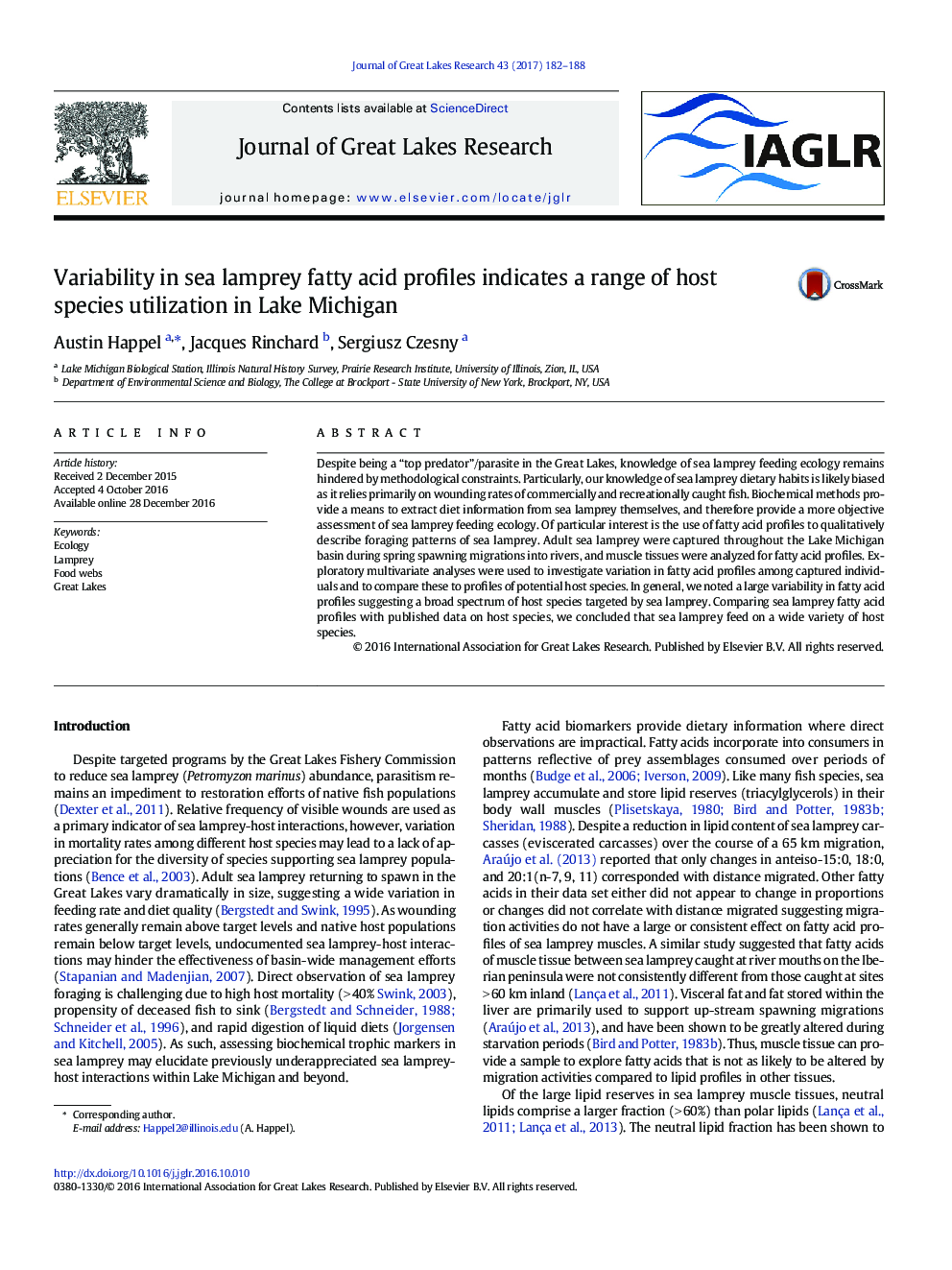| Article ID | Journal | Published Year | Pages | File Type |
|---|---|---|---|---|
| 5744782 | Journal of Great Lakes Research | 2017 | 7 Pages |
Despite being a “top predator”/parasite in the Great Lakes, knowledge of sea lamprey feeding ecology remains hindered by methodological constraints. Particularly, our knowledge of sea lamprey dietary habits is likely biased as it relies primarily on wounding rates of commercially and recreationally caught fish. Biochemical methods provide a means to extract diet information from sea lamprey themselves, and therefore provide a more objective assessment of sea lamprey feeding ecology. Of particular interest is the use of fatty acid profiles to qualitatively describe foraging patterns of sea lamprey. Adult sea lamprey were captured throughout the Lake Michigan basin during spring spawning migrations into rivers, and muscle tissues were analyzed for fatty acid profiles. Exploratory multivariate analyses were used to investigate variation in fatty acid profiles among captured individuals and to compare these to profiles of potential host species. In general, we noted a large variability in fatty acid profiles suggesting a broad spectrum of host species targeted by sea lamprey. Comparing sea lamprey fatty acid profiles with published data on host species, we concluded that sea lamprey feed on a wide variety of host species.
